October 21, 2025

The article "10 Essential RBT Test Questions to Boost Your Exam Success" emphasizes the critical need for effective preparation for the RBT exam, significantly enhancing candidates' chances of success. Understanding the exam format is paramount. Furthermore, utilizing effective study strategies and mastering key content areas are essential components for successfully answering RBT test questions. These elements are not merely academic; they are foundational for advancing in a career in Applied Behavior Analysis. By adopting these strategies, candidates can position themselves for success in this competitive field.
Understanding the intricacies of the RBT exam is essential for aspiring behavior technicians aiming to excel in their careers. With 75 multiple-choice questions assessing critical knowledge in behavior analysis, candidates face both an opportunity and a challenge as they prepare for this pivotal assessment. How can one effectively navigate the complexities of the RBT test format and leverage study strategies to ensure success? This article delves into ten essential questions that illuminate the exam's structure and equip candidates with the tools needed for triumph on test day.
The RBT assessment consists of 75 multiple-choice questions, known as RBT test questions, designed to evaluate your understanding of behavior analysis principles and practices. Candidates are allotted 90 minutes to complete the assessment, which is administered in a computer-based format. Understanding the format of the RBT test questions is crucial; it not only helps you organize your schedule effectively during the assessment but also alleviates stress on test day.
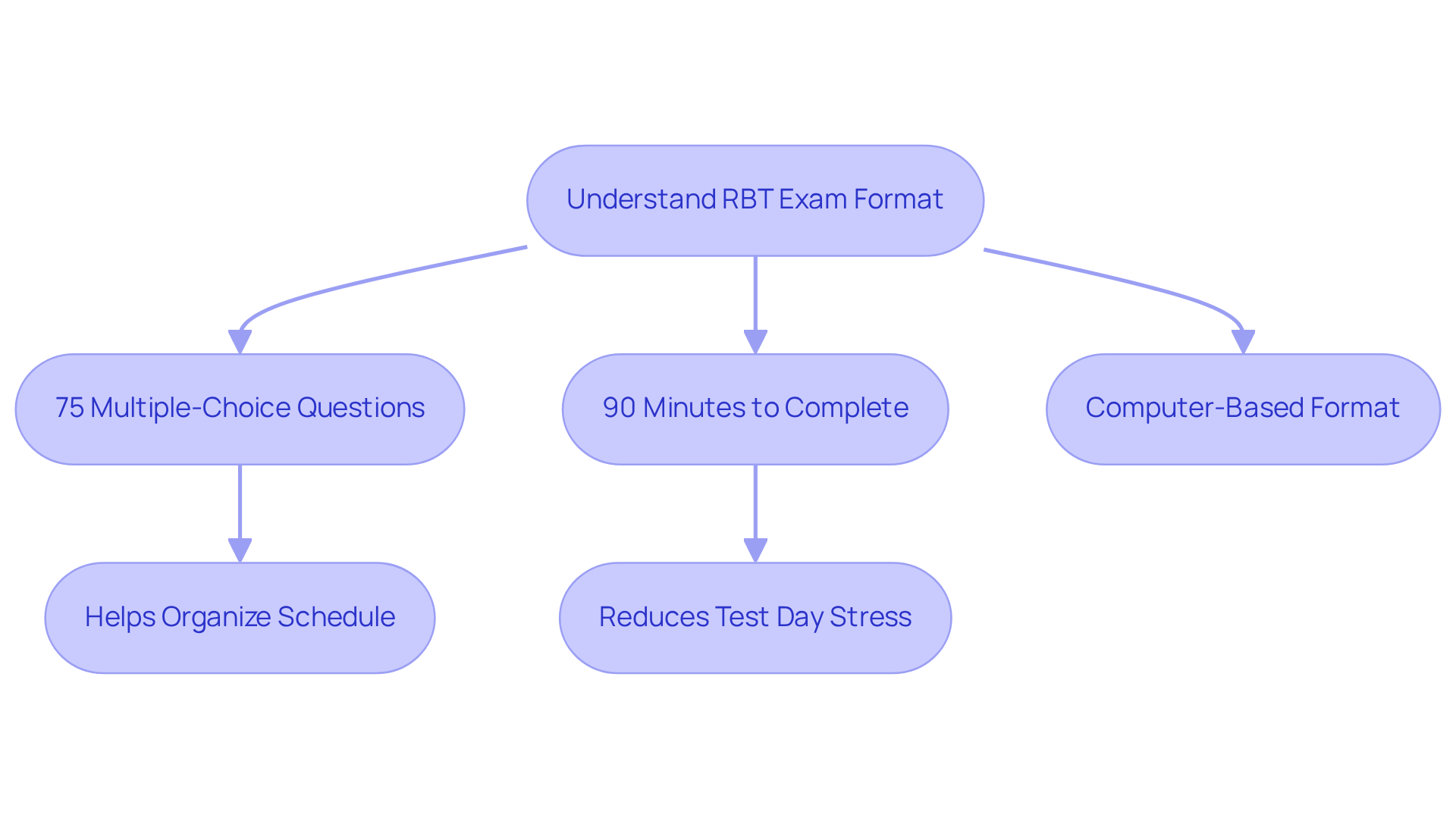
Obtaining RBT certification is essential for advancing careers in Applied Behavior Analysis; it validates skills and significantly enhances employability by successfully answering RBT test questions. Did you know that many employers prefer or require knowledge of RBT test questions for positions involving direct client care? This makes studying for RBT test questions a vital step for career progression.
At Hire ABA, we offer personalized resume assessments that align your experience and career goals with the best job opportunities available. Our advanced job fit scoring not only matches you with roles suited to your skills and preferences but also empowers you to leverage your RBT certification effectively, thereby enhancing your prospects in the ABA therapy landscape.
Are you ready to take your career to the next level? Let us help you navigate the job market with confidence.
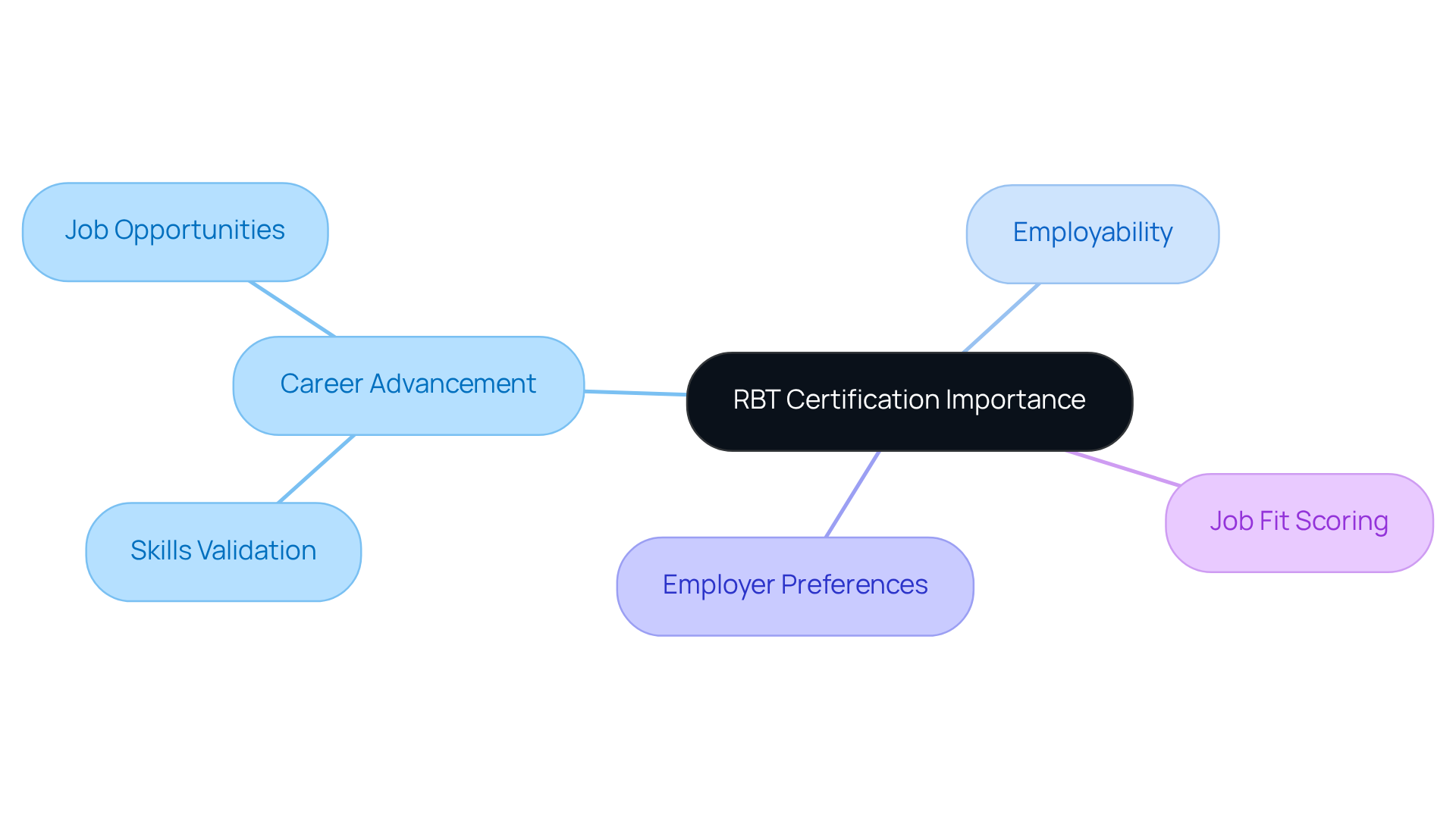
To prepare effectively for the RBT exam, it is essential to utilize a combination of learning techniques, including:
Begin by developing a comprehensive timetable that allocates dedicated time for each subject area, ensuring to include breaks to prevent burnout. Consider participating in group sessions, as they can provide valuable assistance and enhance comprehension through collaborative discussion.
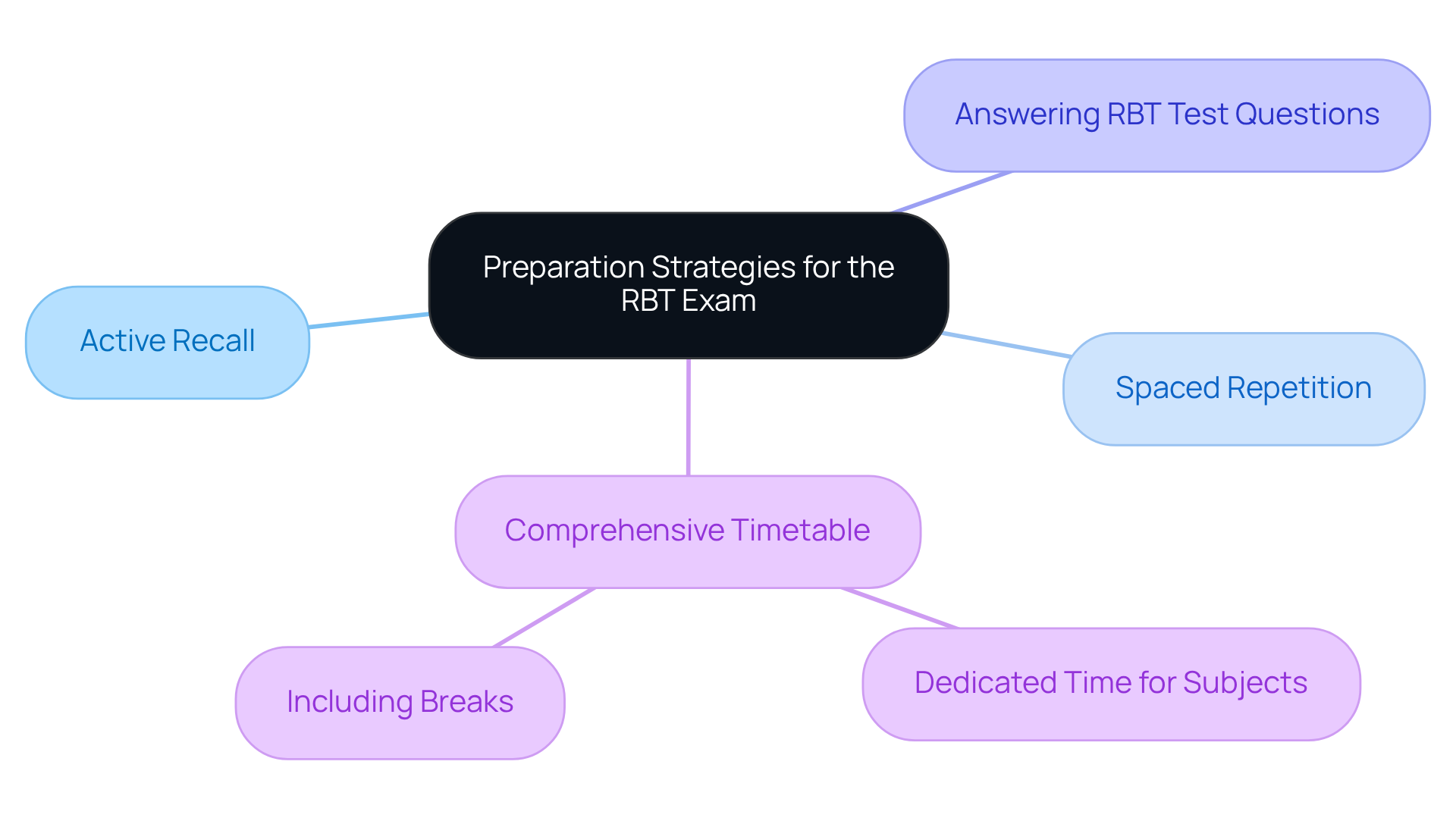
To qualify for the RBT assessment, candidates must complete a minimum of 40 hours of training that involves the RBT test questions outlined in the RBT Task List. This training should be conducted by a qualified instructor and must cover essential topics such as:
Understanding these requirements is crucial for effective planning in the field.
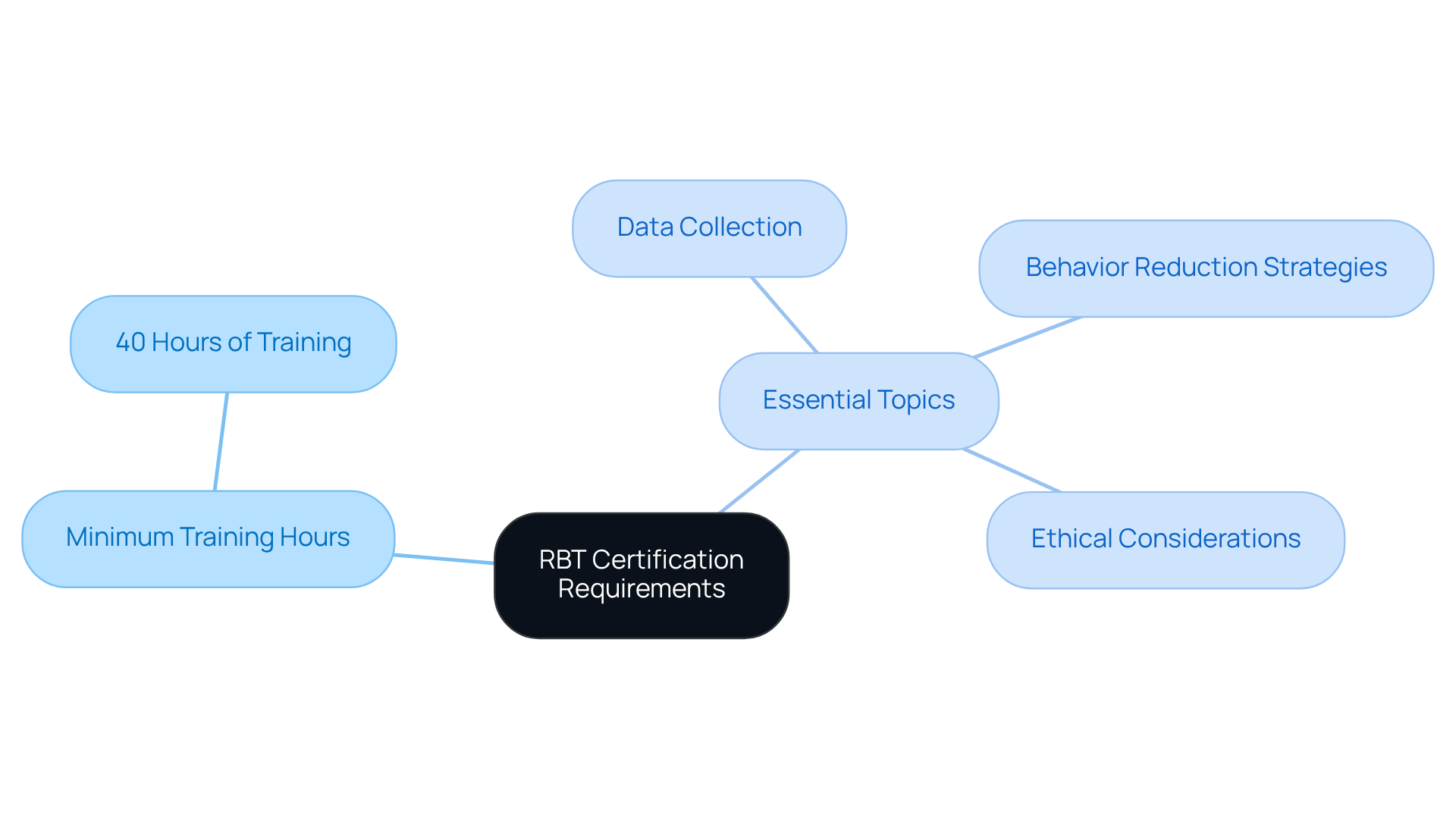
Candidates are encouraged to leverage a diverse array of resources, including the RBT Task List, the Behavior Analyst Certification Board (BACB) website, and reputable textbooks on behavior analysis. Online courses and webinars are invaluable for gaining insights and staying updated on best practices in the field. Additionally, consider utilizing review materials specifically tailored for the RBT test questions.
How effectively are you currently preparing for the RBT exam? Reflect on your resources and explore how these tools can enhance your readiness.

The RBT assessment encompasses several key content areas:
Candidates must ensure they possess a solid understanding of each area, as RBT test questions will be drawn from these topics. Focusing on these areas during revision periods can lead to more efficient preparation.
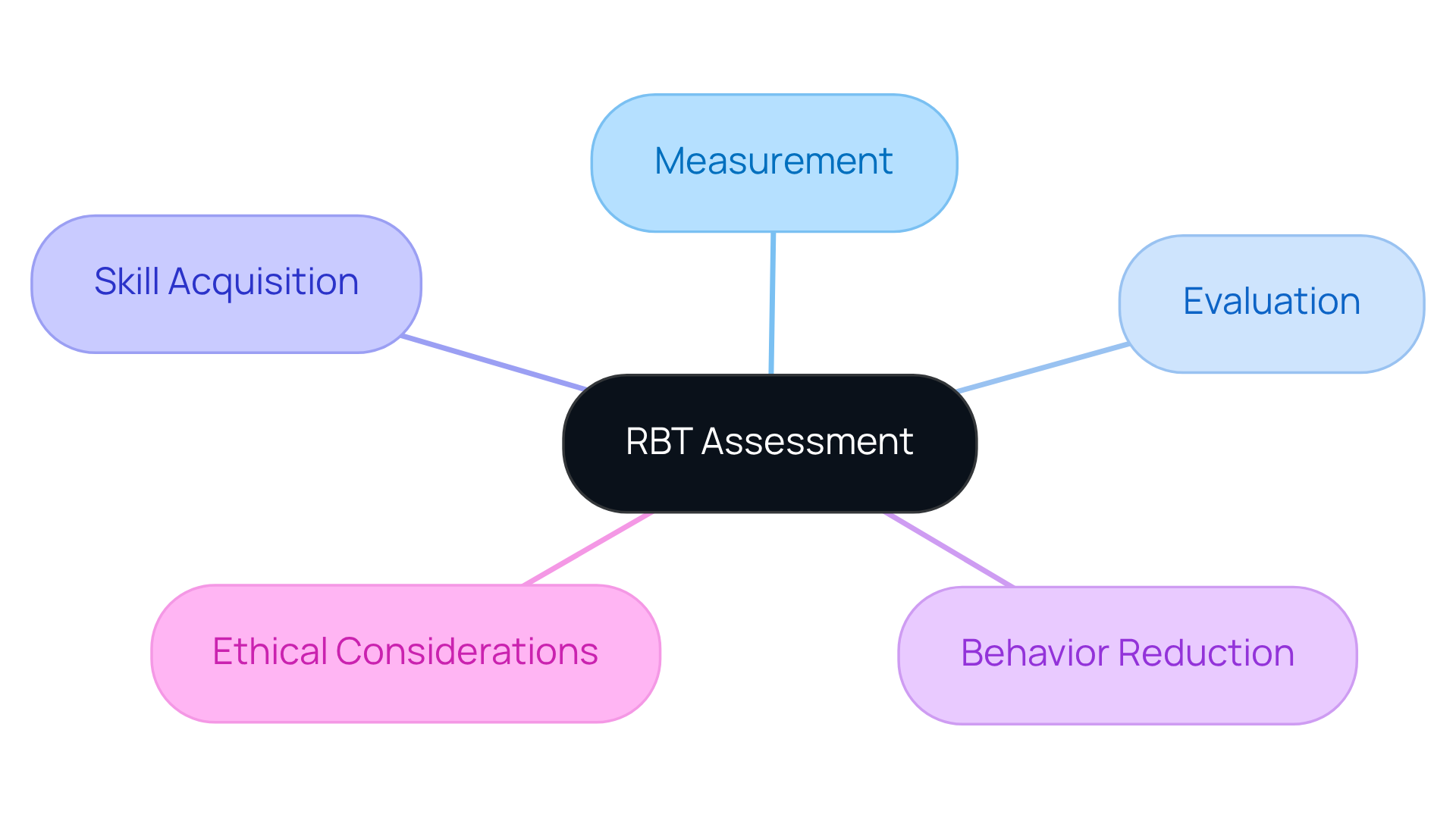
Integrating practice tests and flashcards into your study routine is essential for enhancing your readiness for assessments. Practice assessments not only replicate the test environment but also help identify areas requiring further review. Flashcards serve as an excellent tool for memorizing key terms and concepts, making them versatile for quick revision. By incorporating these methods, you position yourself for success in your evaluations.

On test day, it is crucial to apply effective techniques such as:
If you encounter a challenging question, consider bypassing it and returning later if possible. Maintaining a calm and focused mindset is essential; it will enable you to perform at your best.
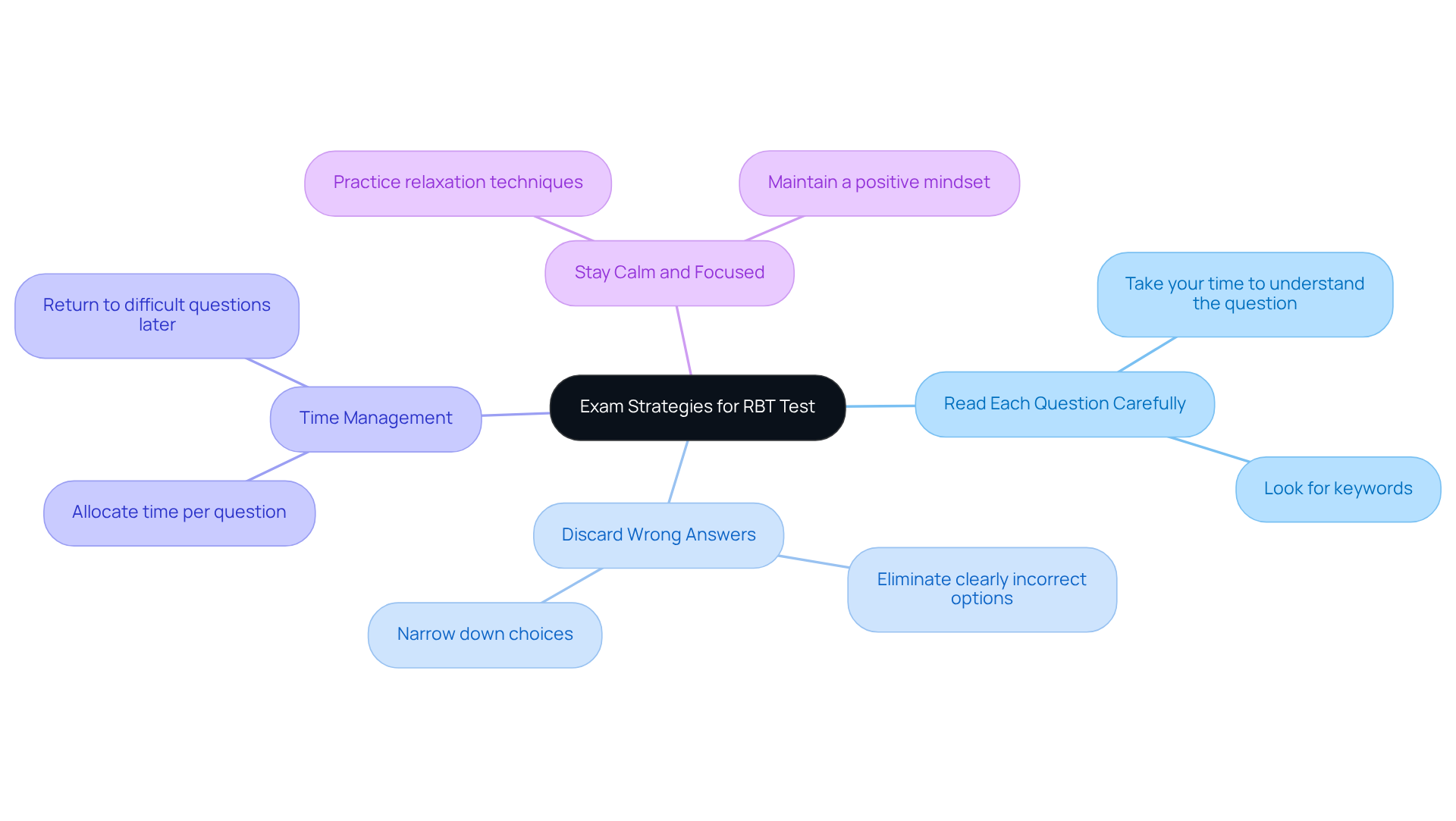
If you do not pass the RBT assessment on your first attempt, you can retake it after a waiting period of 30 days. This allows you to reassess your approach and improve. Applicants are permitted to attempt the assessment up to three times within a 12-month span. It is crucial to evaluate your performance on the first try to identify specific areas for enhancement before retaking the assessment.
Consider this: how can understanding your initial results lead to better outcomes in subsequent attempts? Reflect on your current strategies and recognize the importance of preparation in securing success.
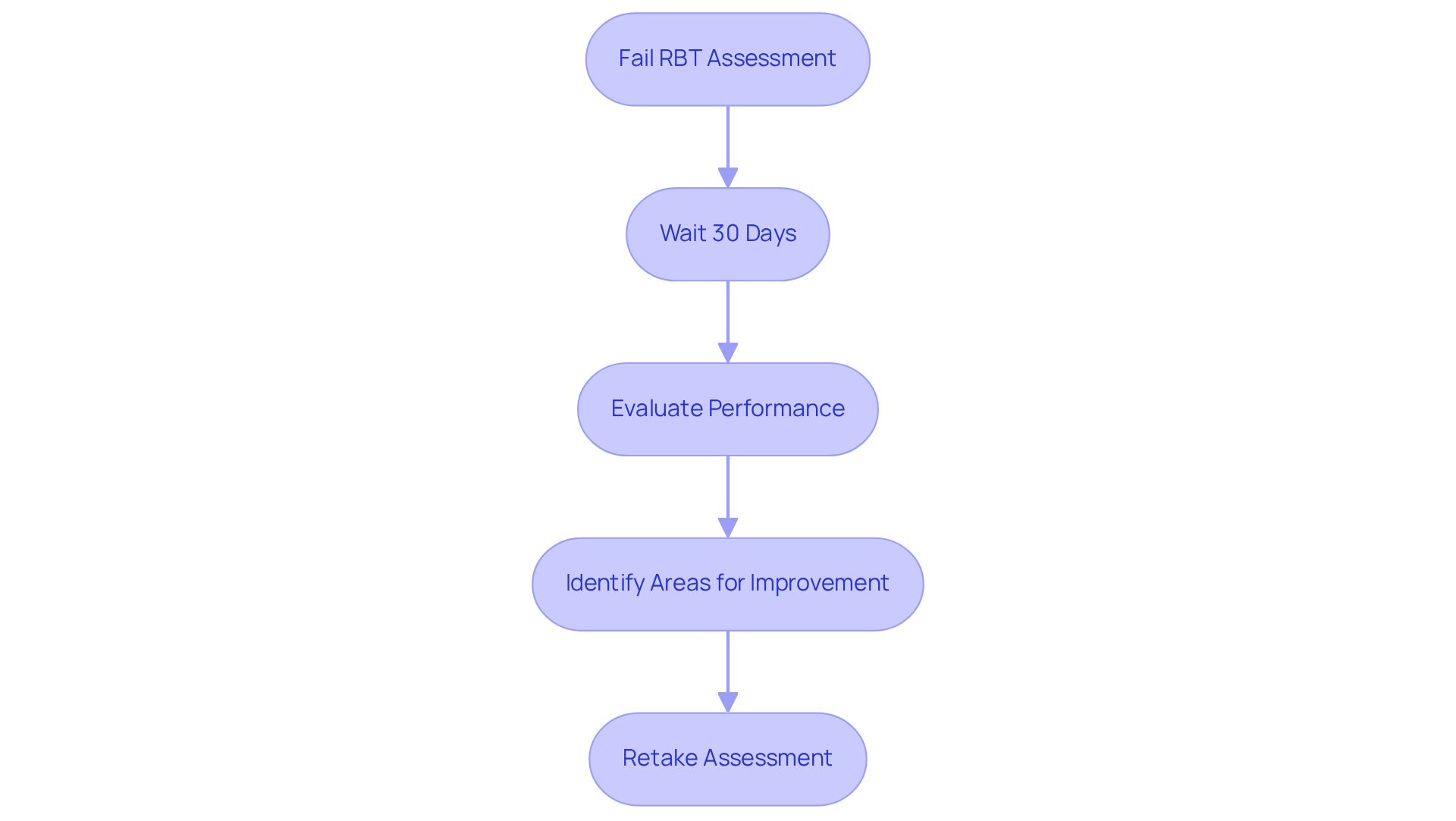
To manage your schedule effectively during the RBT exam, allocate a specific duration to each RBT test question and stick to it. For example, aim to spend no more than one minute per question. Monitor the clock closely and adjust your pace as necessary. If you find yourself lingering too long on RBT test questions, move on and return to them later if time permits.
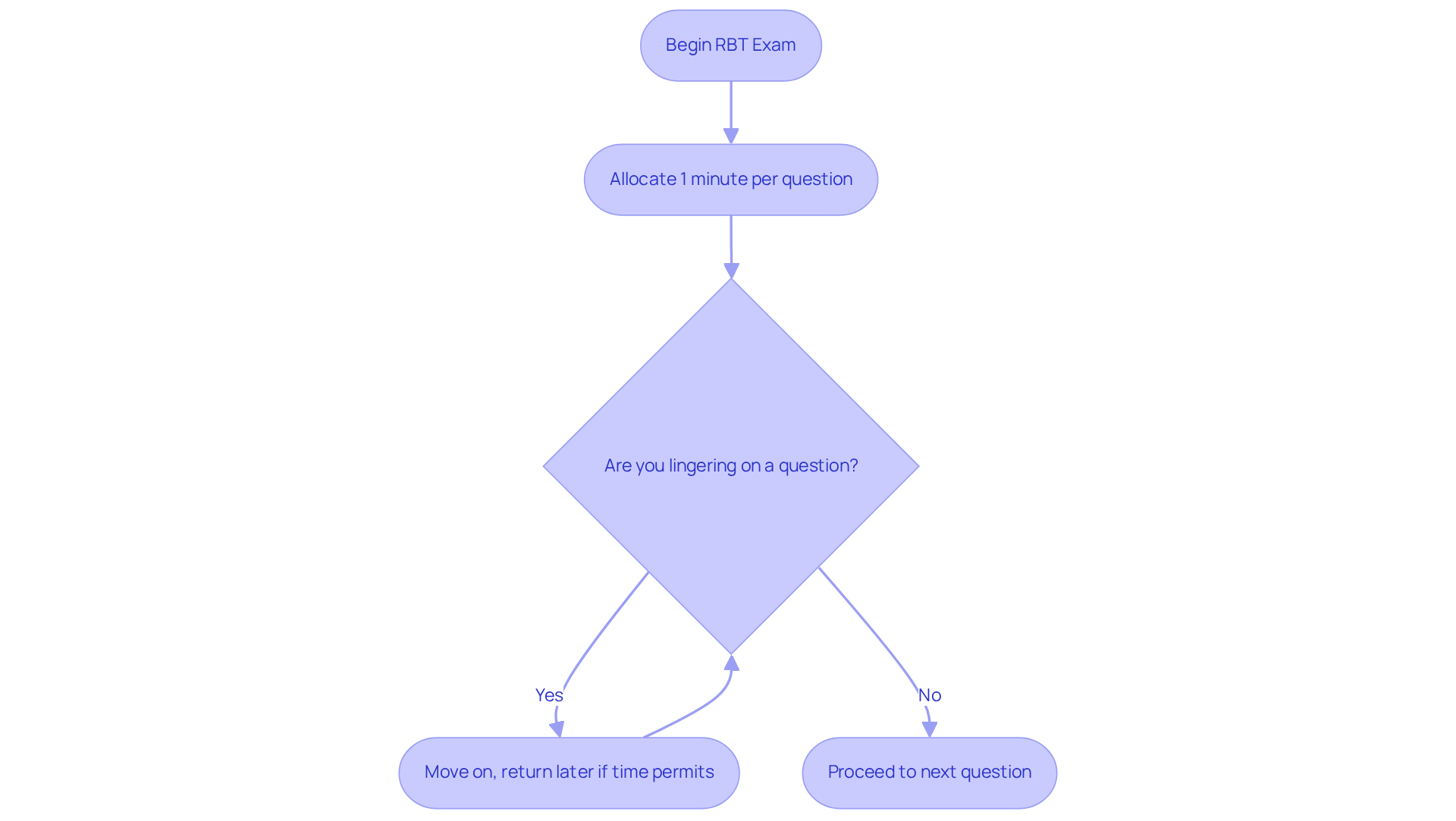
Mastering the RBT exam is pivotal for anyone looking to advance their career in Applied Behavior Analysis. Understanding the exam format and the necessity of RBT certification is essential for career progression. Effective study strategies can significantly enhance preparation efforts.
The structured format of the RBT assessment, the essential training hours required, and the vital content areas that candidates should focus on are key points discussed. The value of practice exams and time management techniques cannot be overstated; these tools are crucial for navigating the test successfully. By leveraging these strategies and resources, candidates can ensure they are well-prepared to tackle the RBT test questions confidently.
Ultimately, the journey toward RBT certification transcends merely passing an exam; it is about equipping oneself with the knowledge and skills necessary to excel in a rewarding career. Whether through diligent study, utilizing recommended materials, or refining exam strategies, taking proactive steps can lead to success. Embrace the challenge, prepare effectively, and take charge of your future in the field of ABA.
What is the format of the RBT exam?
The RBT exam consists of 75 multiple-choice questions, designed to evaluate understanding of behavior analysis principles and practices. Candidates have 90 minutes to complete the assessment, which is administered in a computer-based format.
Why is RBT certification important?
Obtaining RBT certification is essential for advancing careers in Applied Behavior Analysis (ABA) as it validates skills and enhances employability. Many employers prefer or require knowledge of RBT test questions for positions involving direct client care.
What are effective study techniques for the RBT exam?
Effective study techniques for the RBT exam include active recall, spaced repetition, and answering RBT test questions. Developing a comprehensive timetable that includes dedicated study time and breaks is also recommended.
How can group study sessions benefit RBT exam preparation?
Group study sessions can provide valuable assistance and enhance comprehension through collaborative discussion, allowing candidates to better understand the material.
Our expert recruitment strategies and AI-driven sourcing ensure that you receive top-notch candidates quickly, without compromising on quality. Whether you’re looking for BCBAs, Clinical Directors, or RBTs, we’ve got you covered.